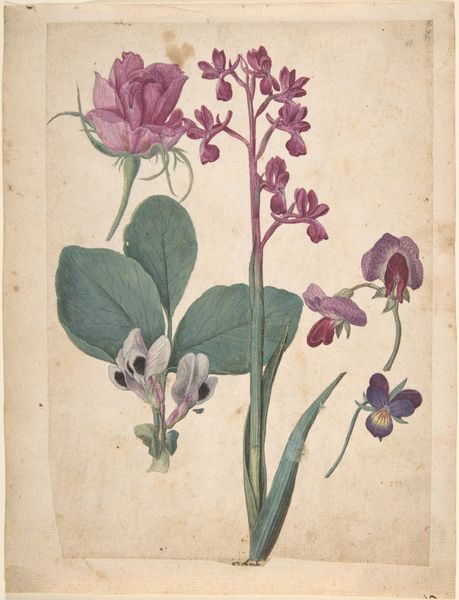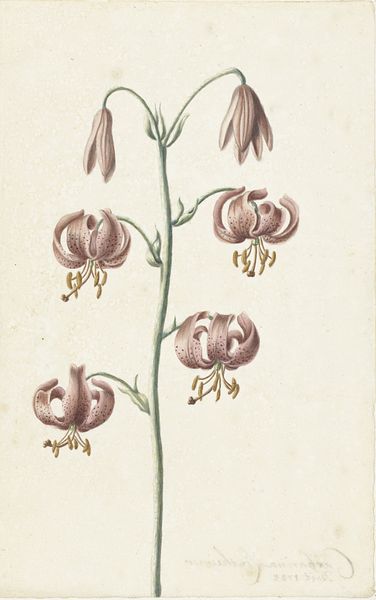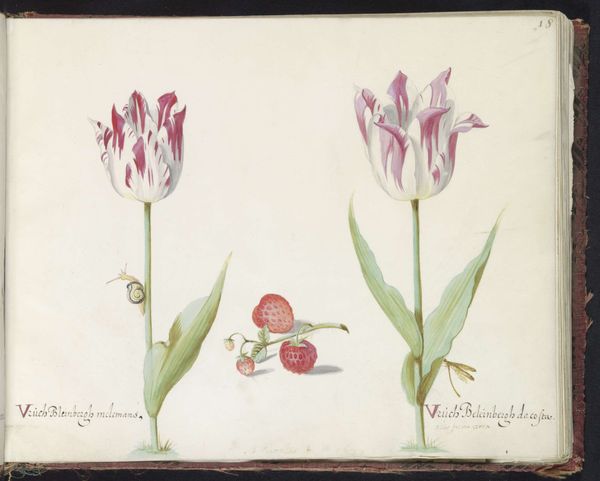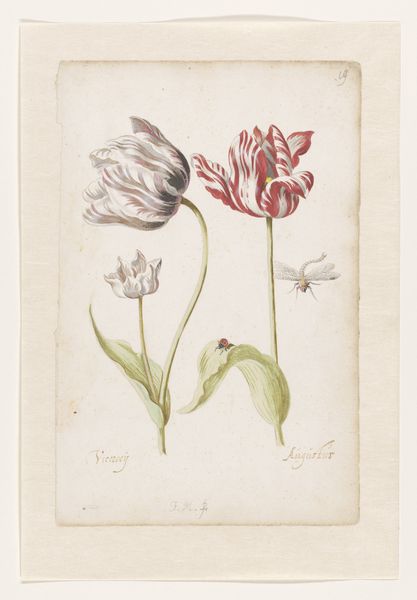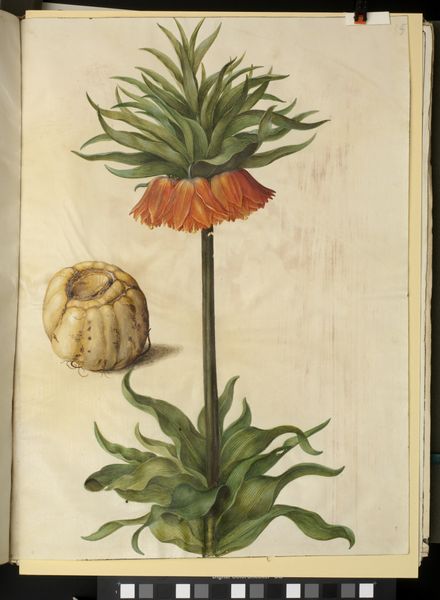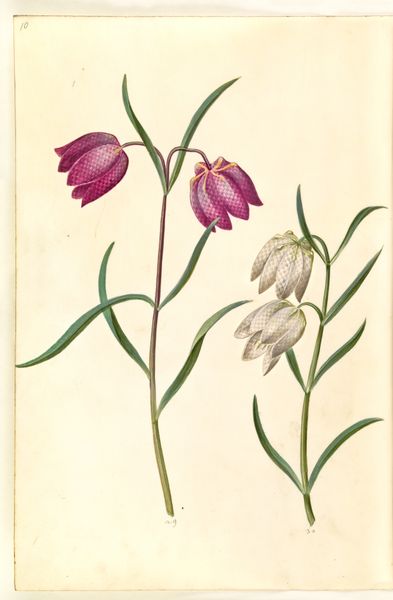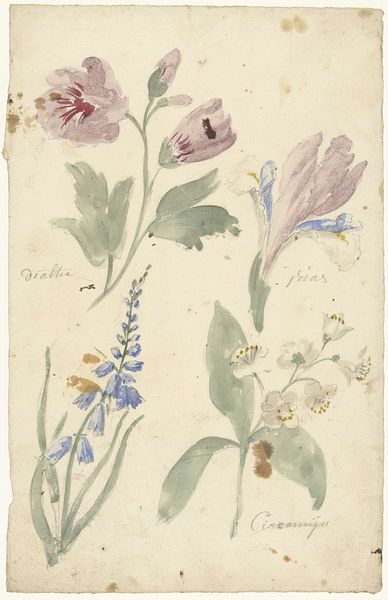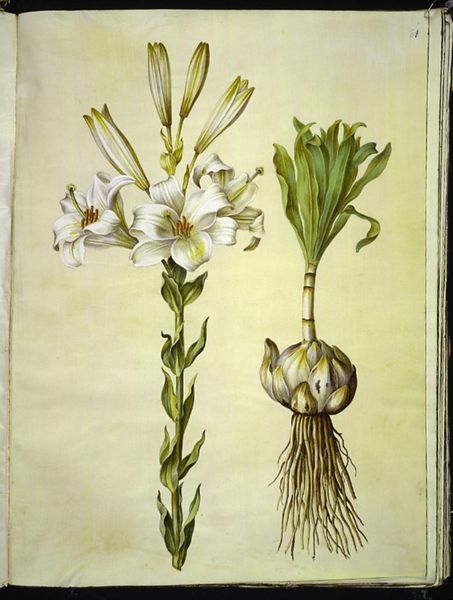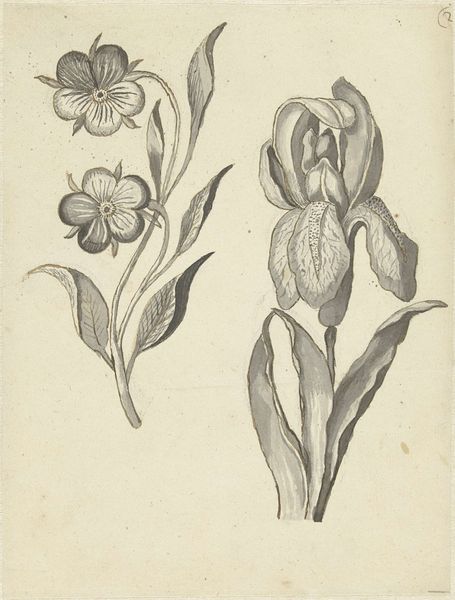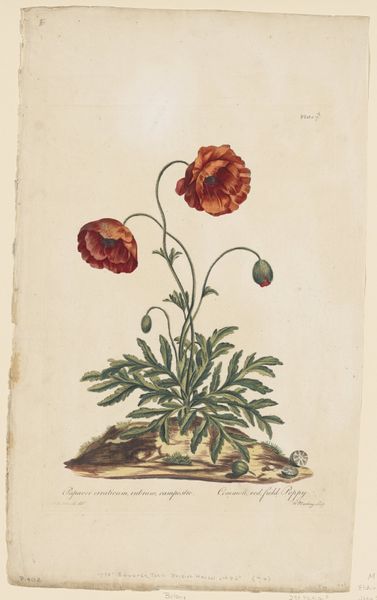
drawing, print, watercolor
#
drawing
#
dutch-golden-age
# print
#
watercolor
#
botanical art
#
watercolor
Dimensions: Sheet: 13 1/4 × 9 5/8 in. (33.7 × 24.5 cm)
Copyright: Public Domain
Editor: This delicate botanical study is "Study of Three Fritillaries," a watercolor, ink and graphite drawing completed in 1683 by Herman Saftleven II. The way the flowers droop gives it such a melancholic, yet tender feel. What do you see in this piece? Curator: The melancholy you perceive speaks volumes, doesn't it? Beyond just botanical illustration, Saftleven’s work intersects with the cultural fascination of the Dutch Golden Age with the natural world but also with the concept of *vanitas*. These fritillaries, beautiful as they are, represent the transient nature of life, wealth, and beauty. Editor: *Vanitas*? How so? They seem so… straightforward. Curator: Think about it: why choose these specific flowers, at this specific stage? Botanical studies weren't just about scientific accuracy. The drooping heads can symbolize the fading of beauty and the inevitability of decay, resonating with a societal obsession about the passage of time, reflected in still life and portraiture. Could this be read as a commentary on the fleeting nature of Dutch prosperity itself? Editor: That's a perspective shift. So the art is not just observing but *commenting*. Were women artists working similarly at the time? Curator: Indeed, although their contributions are often marginalized, women like Maria Merian used botanical illustration as a form of scientific inquiry and social commentary, highlighting different facets of the natural world. These depictions, whether by men or women, are inherently shaped by the artists' and society's concerns, and the scientific lens is never truly objective, especially given gendered social constraints and bias within institutions of science. Editor: It’s remarkable how much historical context shifts my view. I initially saw just a pretty drawing. Curator: Exactly. That’s the power of contextualization. Art becomes a dialogue – not just with the artist, but with the society they inhabited and the narratives they reinforce, resist, or reimagine. It transforms appreciation into a kind of critical inquiry. Editor: This makes me want to examine other flower paintings through that *vanitas* lens! Thanks.
Comments
No comments
Be the first to comment and join the conversation on the ultimate creative platform.
